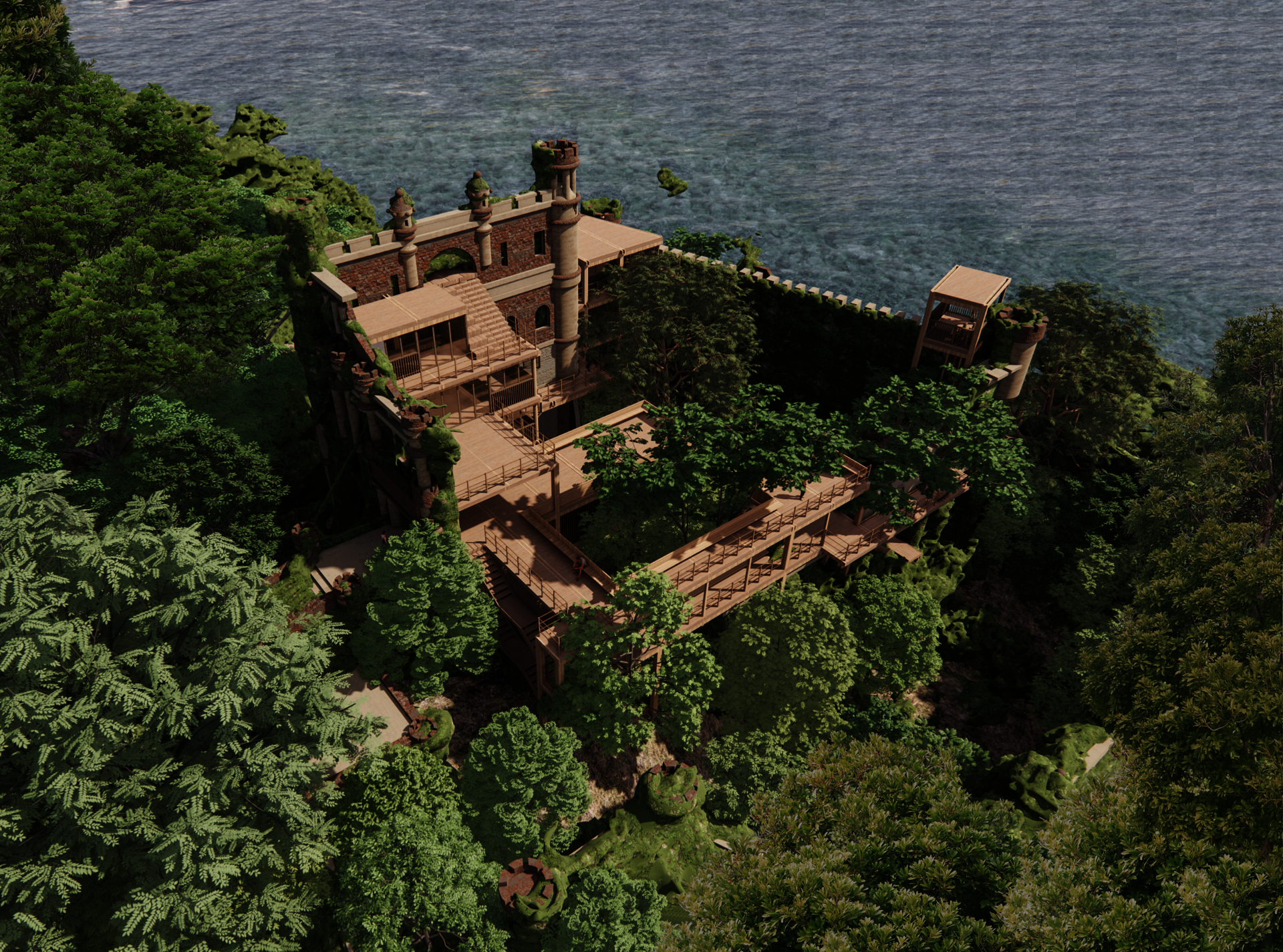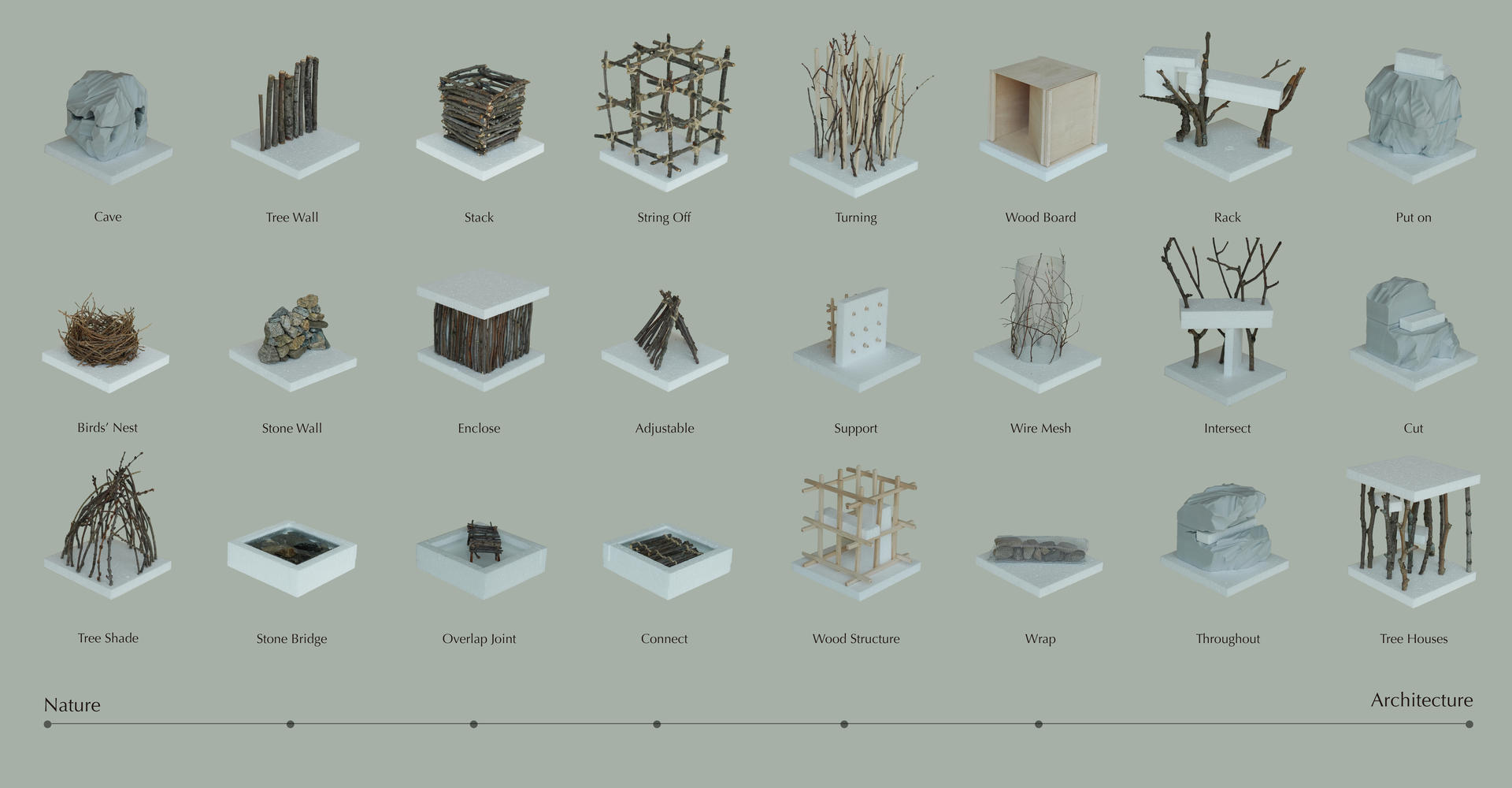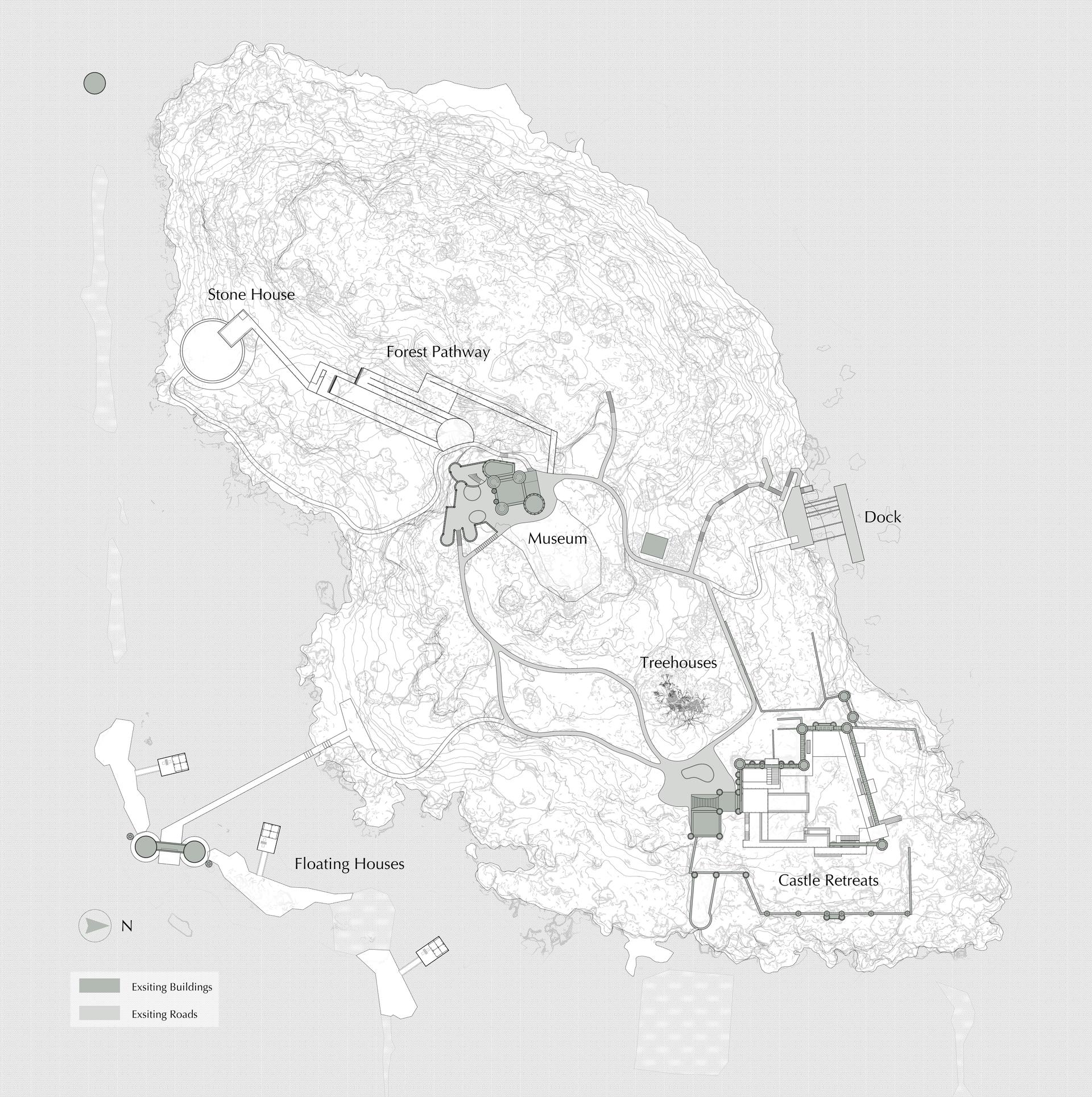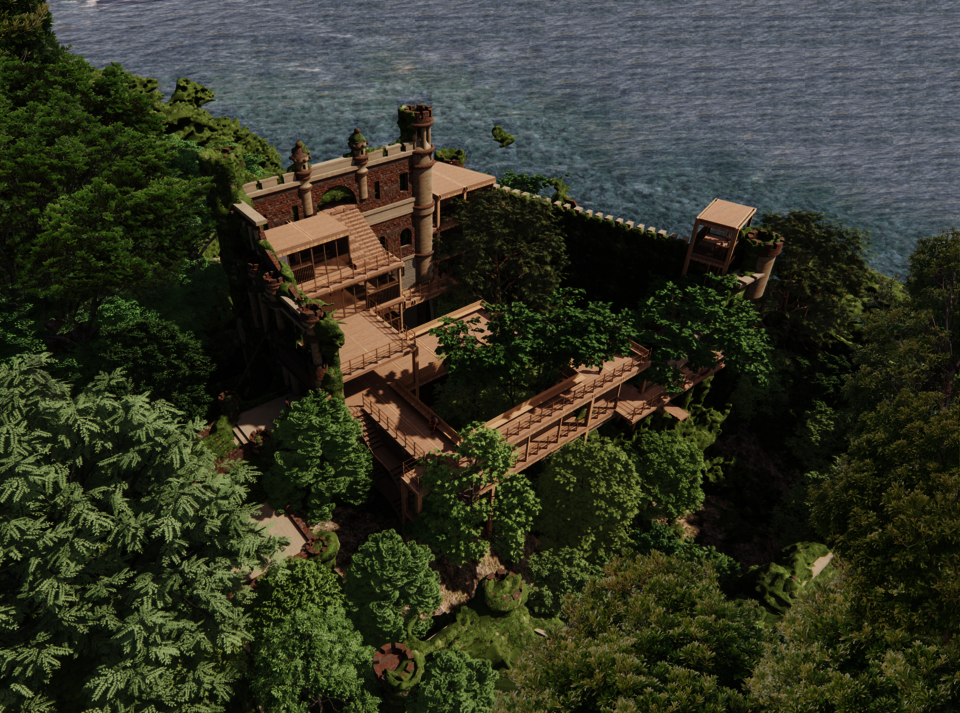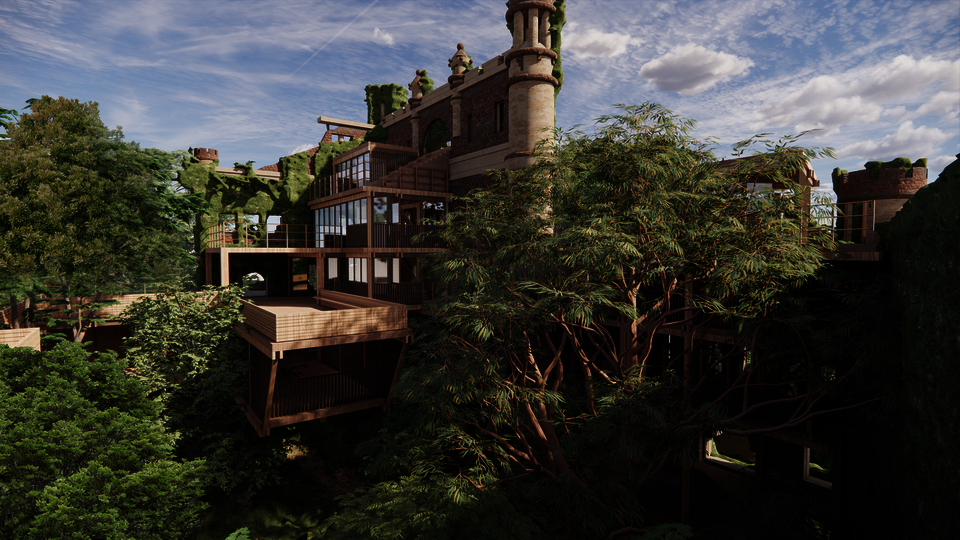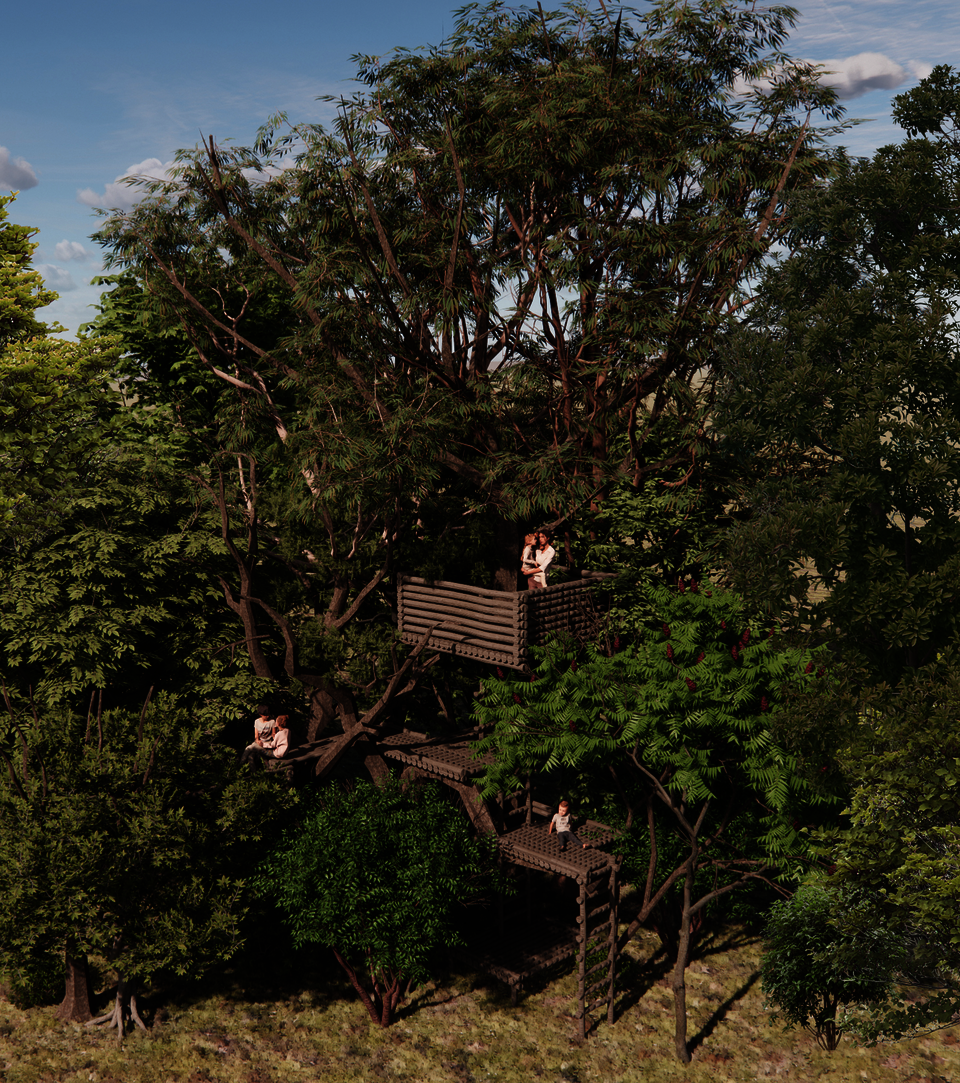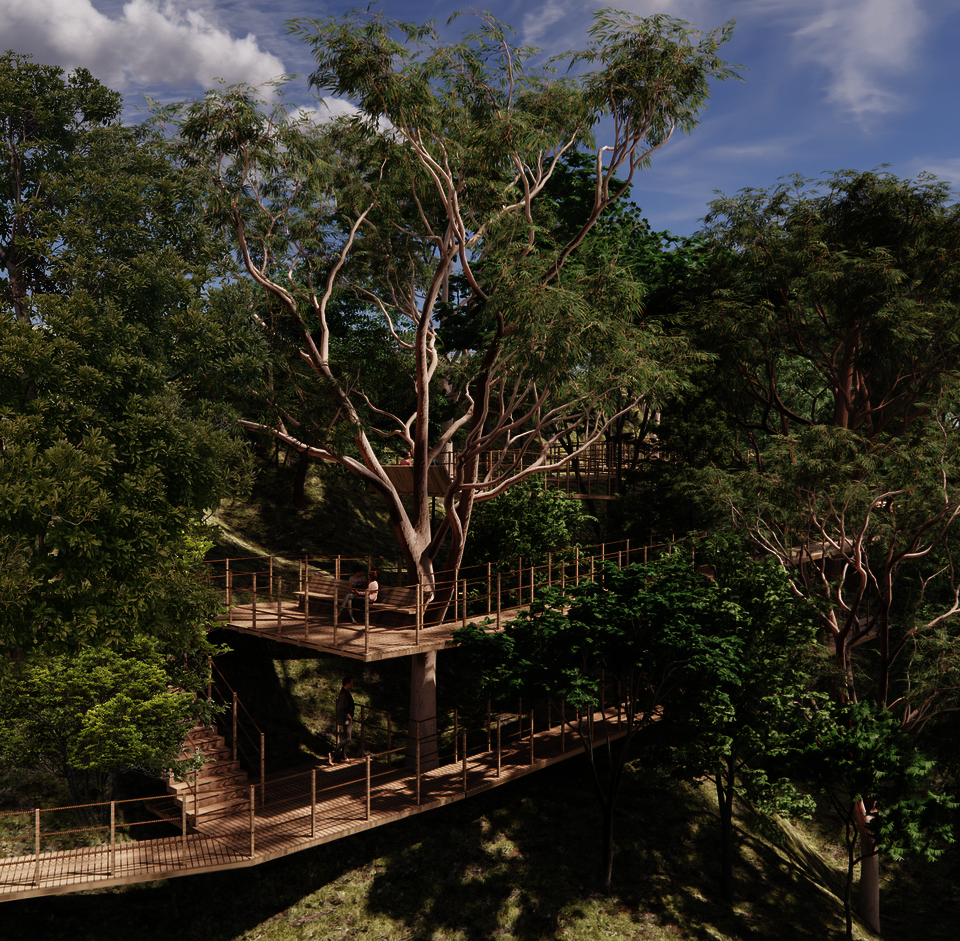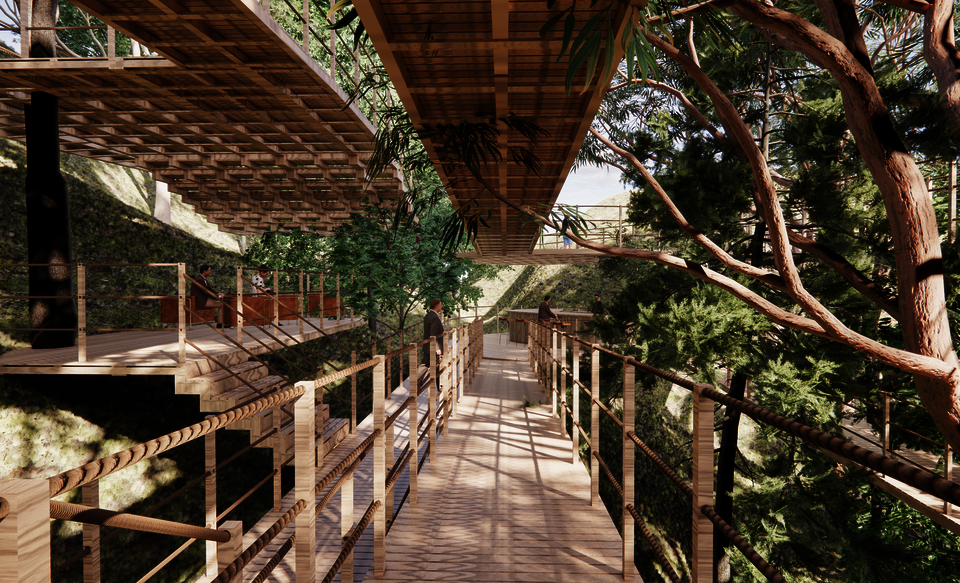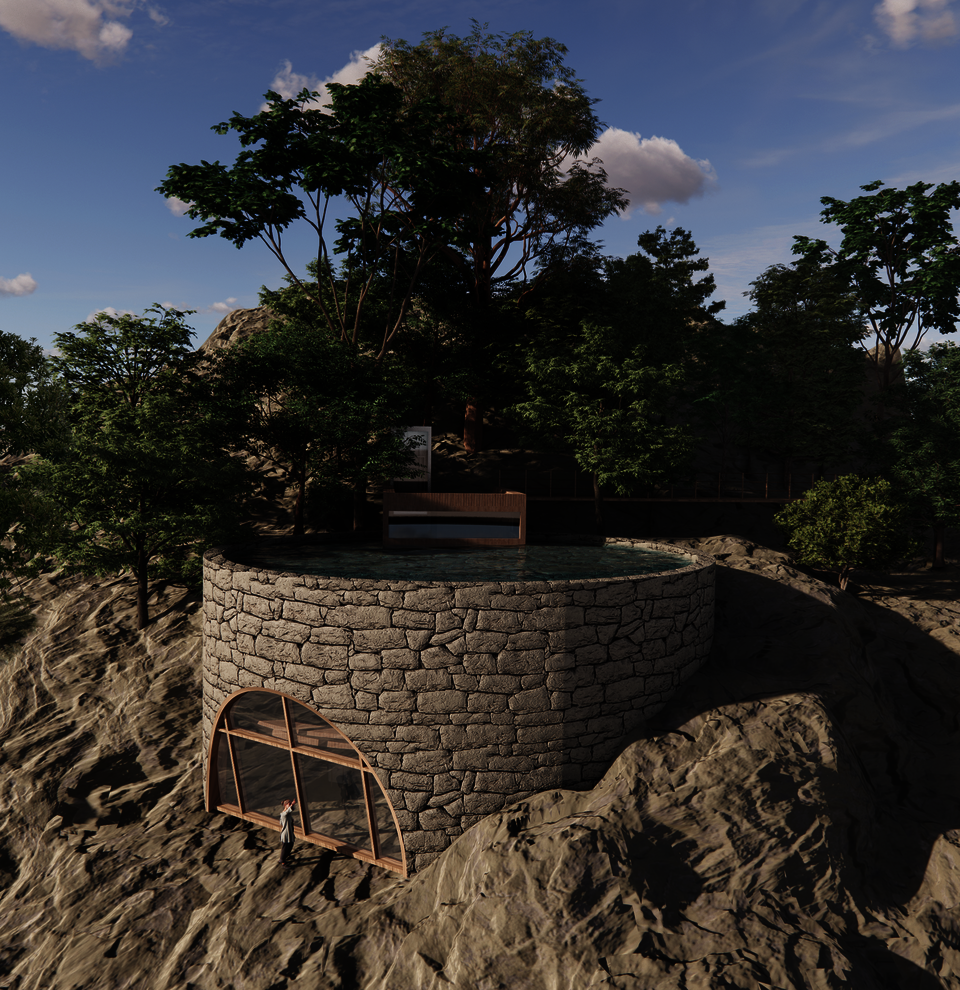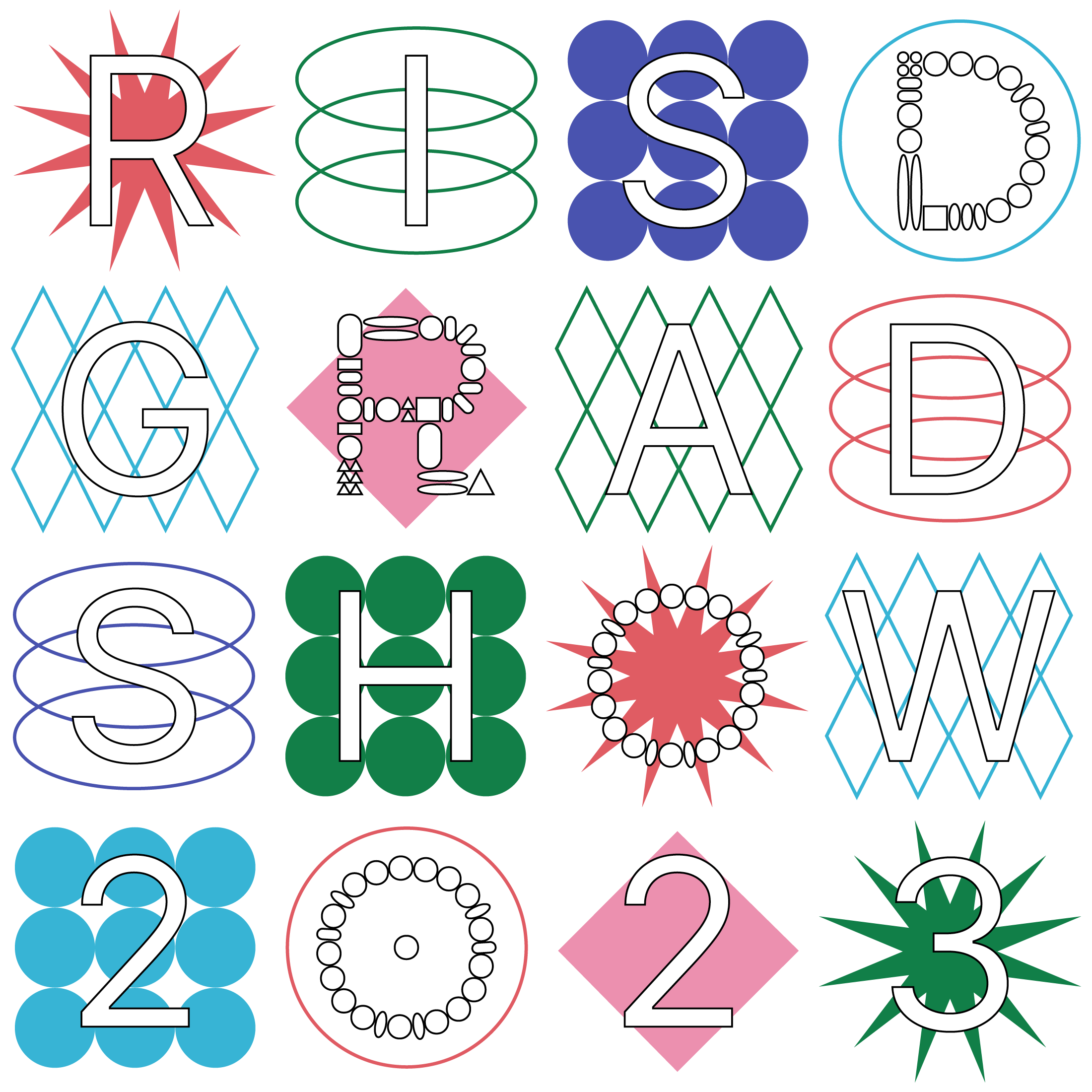Symbiosis
What differentiates nature from architecture? My design uses Pollepel Island as a test site, proposing various responses by designing multiple back-to-nature retreats, and questions whether these two are not opposed, but on a continuous spectrum. Approaching the building as part of the overall environment that "grew from” the site, rather than as an object that is placed alone on the site. It is time to accept that the power of nature and time give buildings a new skin, in the form of patina. This transformation can be treated as positive. We can accept architecture as ever-changing, as an expression of the passage of time.
